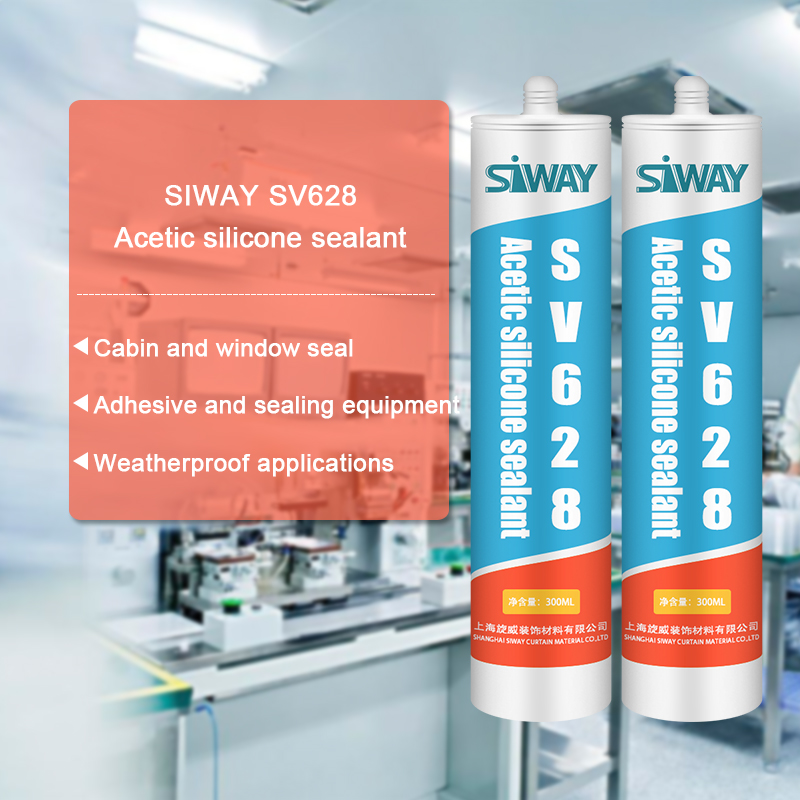12 Years Manufacturer SV-8890 Two-component Silicone Structural Glazing Sealant Export to Algeria
Short Description:
Description SV8890 is neutral curing, designed for glass, stone, marble, granite, aluminum curtain wall and glass daylighting roof and metal structural engineering structural adhesive seal designed silicone sealant structure, excellent bonding performance of structure and the weathering resistance, after artificial accelerated weathering test, various physical and chemical properties have no obvious change in the sealant. When using, SV8890 with dedicated two-component glue machine constructi...
Our mission is to become an innovative supplier of high-tech digital and communication devices by providing value added design, world-class manufacturing, and service capabilities for 12 Years Manufacturer SV-8890 Two-component Silicone Structural Glazing Sealant Export to Algeria, Our company warmly welcome friends from all over the world to visit, investigate and negotiate business.
Description
SV8890 is neutral curing, designed for glass, stone, marble, granite, aluminum curtain wall and glass daylighting roof and metal structural engineering structural adhesive seal designed silicone sealant structure, excellent bonding performance of structure and the weathering resistance, after artificial accelerated weathering test, various physical and chemical properties have no obvious change in the sealant. When using, SV8890 with dedicated two-component glue machine construction, two kinds of components in accordance with the provisions, mixing ratio after curing form elastomer.
Key Features
1. None sag
2. Adjustable working time
3. Excellent adhesion to most building substrates
4. High bonding strength and modulus
5.12.5%movement capability
6. Silicone durability
Basic Application
1.Glass, stone, marble, granite, aluminum curtain wall and glass daylighting roof and metal structural engineering structural adhesive seal;
2.Insulating Glass of the second seal
3.Many other building and industrial applications
Technical data sheet
| Test project | Unit | value |
| Flow, sagging or vertical flow | mm | 0 |
| Operating time | min | 20 |
| surface drying time(25℃,50%R.H.) | min | 40-60 |
| Durometer Hardness | Shore A | 20-60 |
| At 23 ℃ maximum tensile strength elongation | % | ≥100 |
| Tensile strength(23℃) | Mpa | 0.9 |
| Tensile strength(90℃) | Mpa | 0.68 |
| Tensile strength(-30℃) | Mpa | 0.68 |
| Tensile strength(flooding) | Mpa | 0.68 |
| Tensile strength(flooding – ultraviolet) | Mpa | 0.68 |
| Bond damage area | % | 5 |
| Thermal aging(thermal weight loss) | % | ≤5 |
| Thermal aging(crack) | No | |
| Thermal aging(efflorescence) | No |
Certification
GB 16776
Color
Component A(Base) – White, Component B(Catalyst)- Black
Package
1. Component A(Base): (190L), Component B(Catalyst) (18.5L)
2. Component A(Base):24.5kg (18L), Component B(Catalyst): 1.9kg (1.8L)
Shelf life
12 months
Note
If you want the TDS or MSDS or other details, please contact with our sales person.
Chemical Technology – I by Dr. I.D.Mall,Department of Chemical Engineering,IIT Roorkee.For more details on NPTEL visit https://nptel.ac.in
A simple and very cheap way to make custom shaped moulds for creating simple resin castings with or without an LED embedded into them.
The mould is based on a popular technique on the Internet which uses common household materials to make good silicone rubber moulds. It’s basically just standard sealant silicone mixed with cornflour (cornstarch) to make a malleable putty into which your master shape is pressed. If using non plastic masters then apply some oil or Vaseline to the object so that the silicone doesn’t stick to it.
When the mould has cured in an hour or so (but leave overnight if possible) then the master can be removed and the flexible mould can then be used to produce replicas from various resins. I like the simplicity of the two part syringe resins which can be bought at dollar store type shops.
To embed an LED I prefer to use the shorter “strawhat” 4.8mm LEDs as it helps to keep the chip as far back from the front of the casting as possible for good light distribution. Bend the leads to the side at right angles to the LED so that it can be placed across the top of the mould with the LED submerged in the resin.



